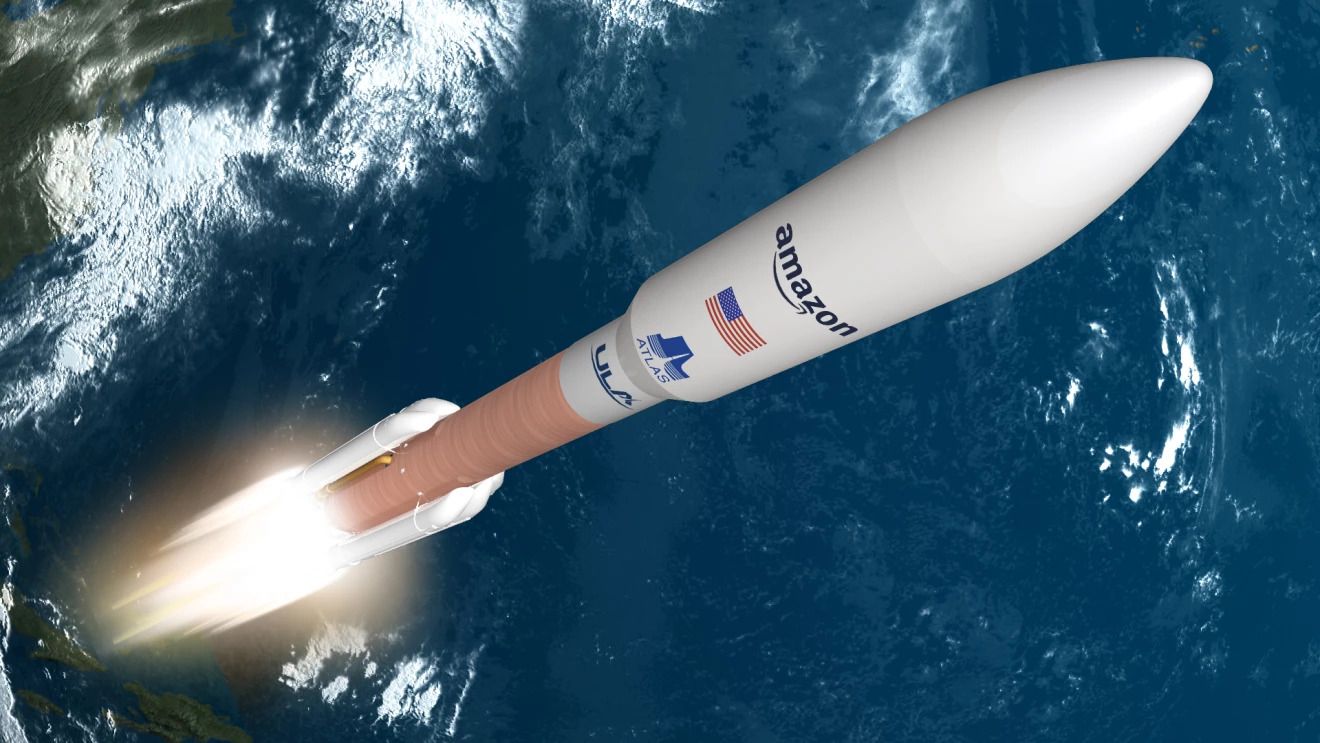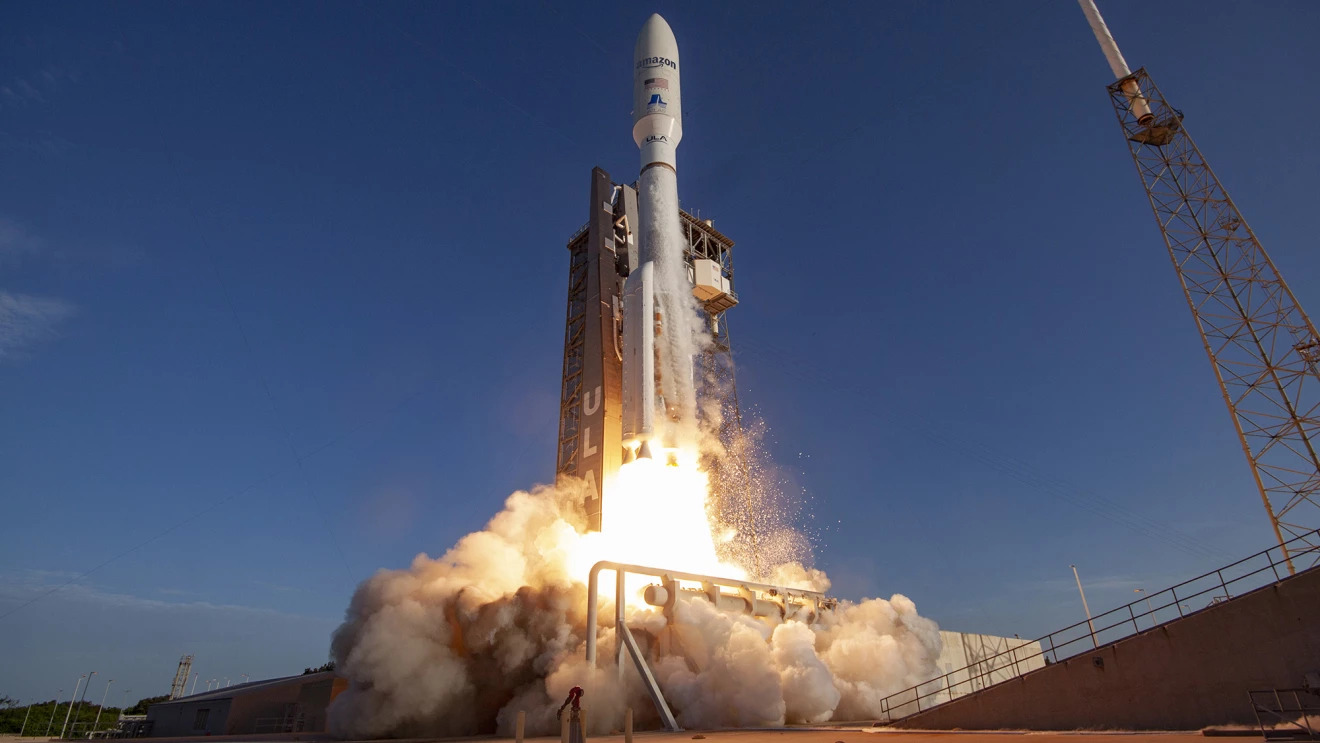Amazon's 1st Kuiper megaconstellation satellites will launch on a ULA Atlas V rocket

Amazon has selected United Launch Alliance (ULA) to start launching its megaconstellation of internet satellites to space.
ULA will participate in nine launches of Project Kuiper, which Amazon hopes will eventually send 3,236 advanced satellites to low Earth orbit. The number of satellites ULA will send aloft was not disclosed in a press release from the two organizations, nor was the value of the launch contract.
The missions will proceed on ULA's Atlas V rocket from Space Launch Complex 41 at Cape Canaveral Space Force Station in Florida at some date, also yet to be announced. Atlas V is a veteran of numerous Earth and Mars missions to low Earth orbit and beyond, including Global Positioning System satellites, the New Horizons mission to Pluto, the recently landed Mars Perseverance rover, as well as the Curiosity rover and Insight missions that landed on Mars in 2012 and 2018.
In photos: Atlas V launches AEHF-6 military satellite for US Space Force
"We could not be more pleased to be working with Amazon to support the initiative," Tory Bruno, ULA's president and CEO, said in a statement.
Amazon hinted that it will be looking at other companies to launch satellites into space on its overall aim to provide broadband Internet for underserved communities in remote or rural areas. The satellites and dispensing system are designed "to accommodate multiple launch vehicles — this gives us the flexibility to use many different rockets and providers to launch our satellite system," Rajeev Badyal, vice president of technology for Project Kuiper, said in the same statement. "Atlas V is a capable, reliable rocket, and we're proud to be working with ULA to support these important first launches," Badyal added.
Amazon has been quiet about revealing details about Project Kuiper, which it first announced in 2019. At the time of the announcement, the company did not disclose details such as which companies would be building the satellites, nor when it plans to have the constellation in orbit.
Get the Space.com Newsletter
Breaking space news, the latest updates on rocket launches, skywatching events and more!
Its initial plans filed with the International Telecommunication Union included 784 satellites in a 366-mile (590 kilometers) orbit, plus 1,156 satellites in a 391-mile (630 km) orbit and 1,296 in a 380-mile (610 km) orbit, which firmly places the satellites in low Earth orbit. For comparison, the International Space Station's average orbit is 250 miles (400 km).

In July 2020, Kuiper received unanimous approval from the Federal Communications Commission (FCC), which regulates telecommunications services in the United States, to deploy the satellite constellation.
Amazon will enter a growing competitive market for broadband satellite business, including SpaceX's Starlink (already in force with more than 1,400 satellites), Boeing, the European company Thales Alenia and Telesat Canada.
Critics worry about the effects of these various satellite groups on professional astronomy observations, particularly wide-field sky surveys.
Amazon said it plans to spend more than $10 billion on the constellation. Services will include ground-station service for customers ranging from households to large businesses. It will also provide backhaul (the side of the network that communicates with the Internet) for ongoing 5G deployment worldwide; 5G is a faster mobile protocol that supports the Internet of Things, among other benefits.
Follow Elizabeth Howell on Twitter @howellspace. Follow us on Twitter @Spacedotcom and on Facebook.
Join our Space Forums to keep talking space on the latest missions, night sky and more! And if you have a news tip, correction or comment, let us know at: community@space.com.

Elizabeth Howell (she/her), Ph.D., was a staff writer in the spaceflight channel between 2022 and 2024 specializing in Canadian space news. She was contributing writer for Space.com for 10 years from 2012 to 2024. Elizabeth's reporting includes multiple exclusives with the White House, leading world coverage about a lost-and-found space tomato on the International Space Station, witnessing five human spaceflight launches on two continents, flying parabolic, working inside a spacesuit, and participating in a simulated Mars mission. Her latest book, "Why Am I Taller?" (ECW Press, 2022) is co-written with astronaut Dave Williams.









